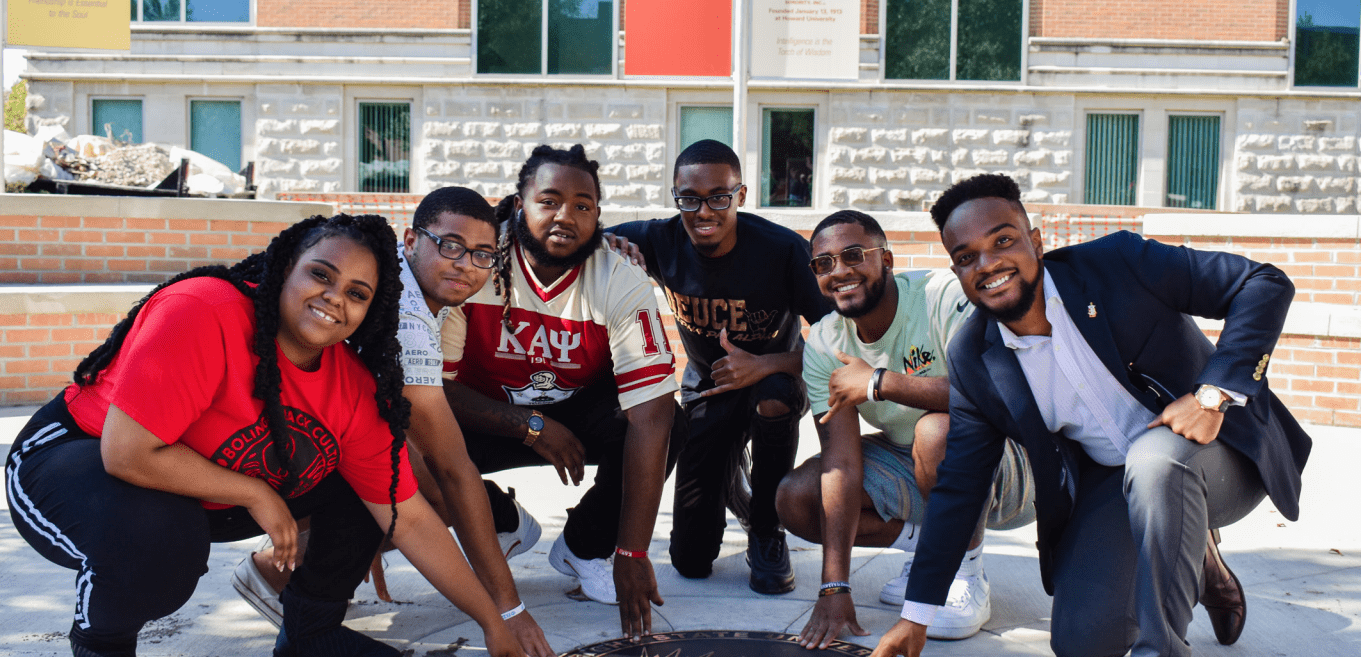
NPHC Members | Photo by Dylan Collison | The Wright State Guardian
The emotion was just as palpable as the coming rain during the National Pan-Hellenic Council (NPHC) memorial plots ribbon-cutting ceremony. Despite the dreary weather, the Wright State community gathered to celebrate a historical moment and landmark of racial progress in the Dayton region.
Groundbreaking of the historic plot project
“These plots represent the history that created us and will become the legacy that is all of us,” Arionna Wooden, secretary for NPHC and member of Alpha Kappa Alpha Sorority, Inc., said.
The NPHC plots are a memorial garden representing the Divine 9 organizations and serving as a safe space for minority students.
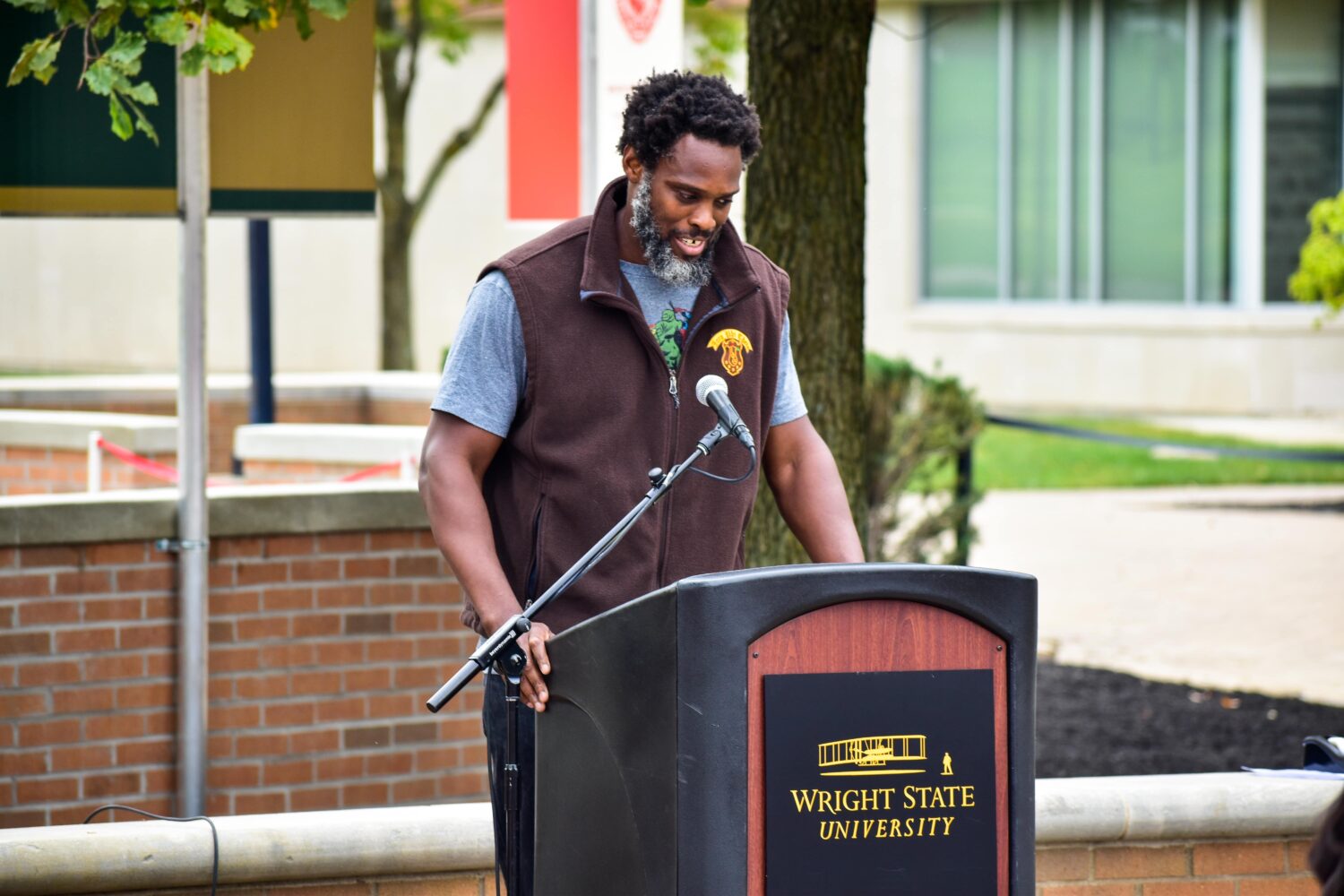
The plots officially began construction in May of 2021 and finished in October of that same year. However, the idea of a plot structure began well before that time. Some even claim the idea was dreamt up decades ago, only coming to fruition recently.
The project attracted the fifty-fourth Student Government Association (SGA) president Adrian Williams. He made the initiative a cornerstone of his administration.
Williams is also a member of Kappa Alpha Psi Fraternity, Inc.
“This project is a culmination of over a decade of hard work and is a testament to the tradition of excellence and achievement of our organizations,” Williams said during the ceremony.
“This project was my proudest moment as student body president.”
SGA passed resolution 21-05 on January 26, 2021, encouraging the plots to be built on campus.
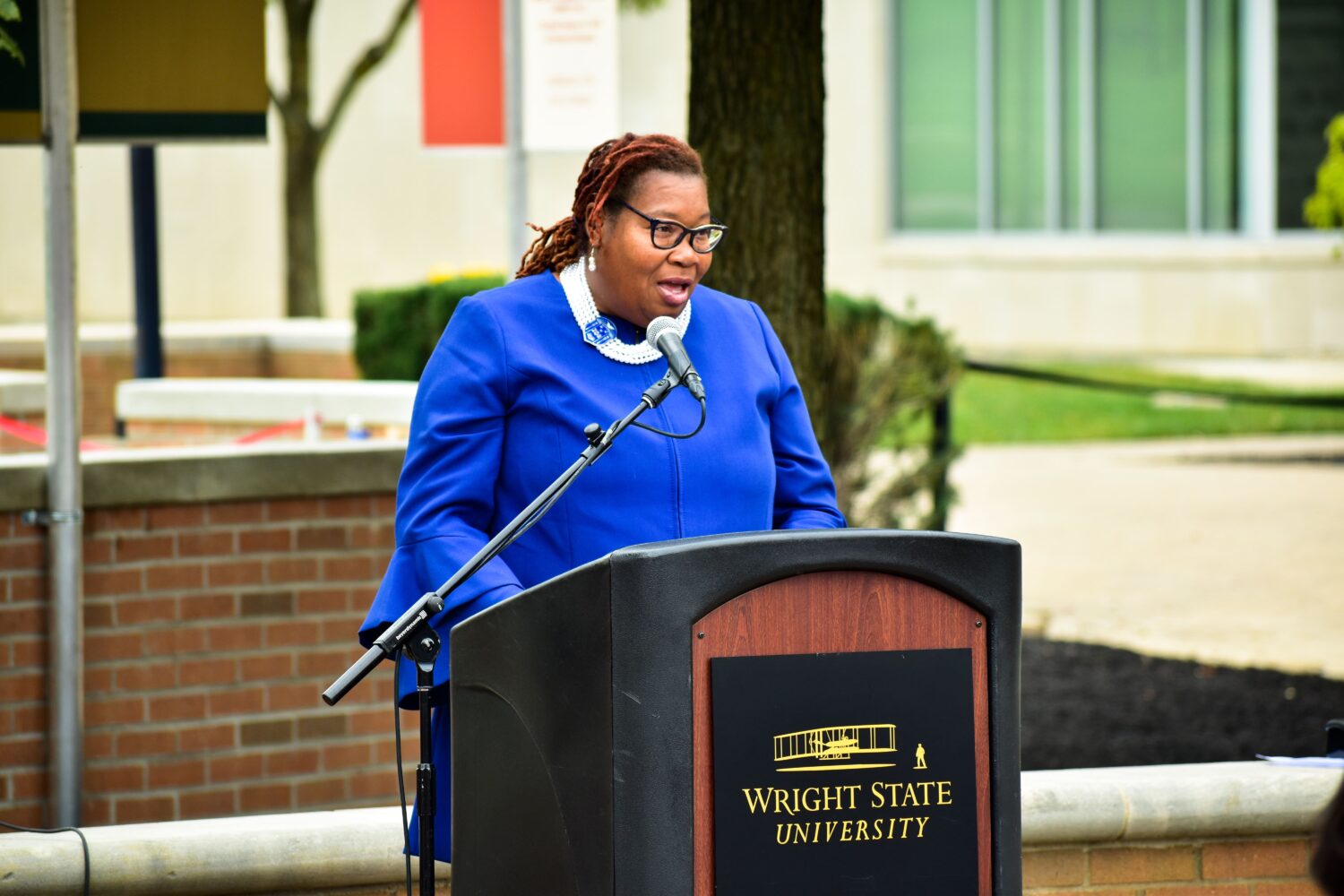
Minority representation in Greek life
The Divine 9 are nine historically Black fraternities and sororities belonging to the NPHC.
Wright State is host to five of these organizations and shares the Alpha Kappa Alpha Sorority, Inc. Epsilon Chi chapter with the nearby University of Dayton. These organizations hold a history in advocating and advancing Black and Brown communities.
Community voices
The plot is constructed of concrete and brick, but to student leaders and those in communities of color, the plot is made up of so much more.
The existence of the plots shows recognition of the African American communities and the student leaders that are a part of them.
“For me, it comes down to acknowledgment,” Wooden said. “We needed people to keep striving on campus; we need students to keep speaking up on campus; we need students to keep the leaders on campus.”
The young leader began her advocacy journey in 2019 when she joined the Alpha Kappa Alpha Sorority, Inc. She has since worked her way up to the leadership level. She uses her platform to advocate for the historically Black Greek community and inspire others to create active change.
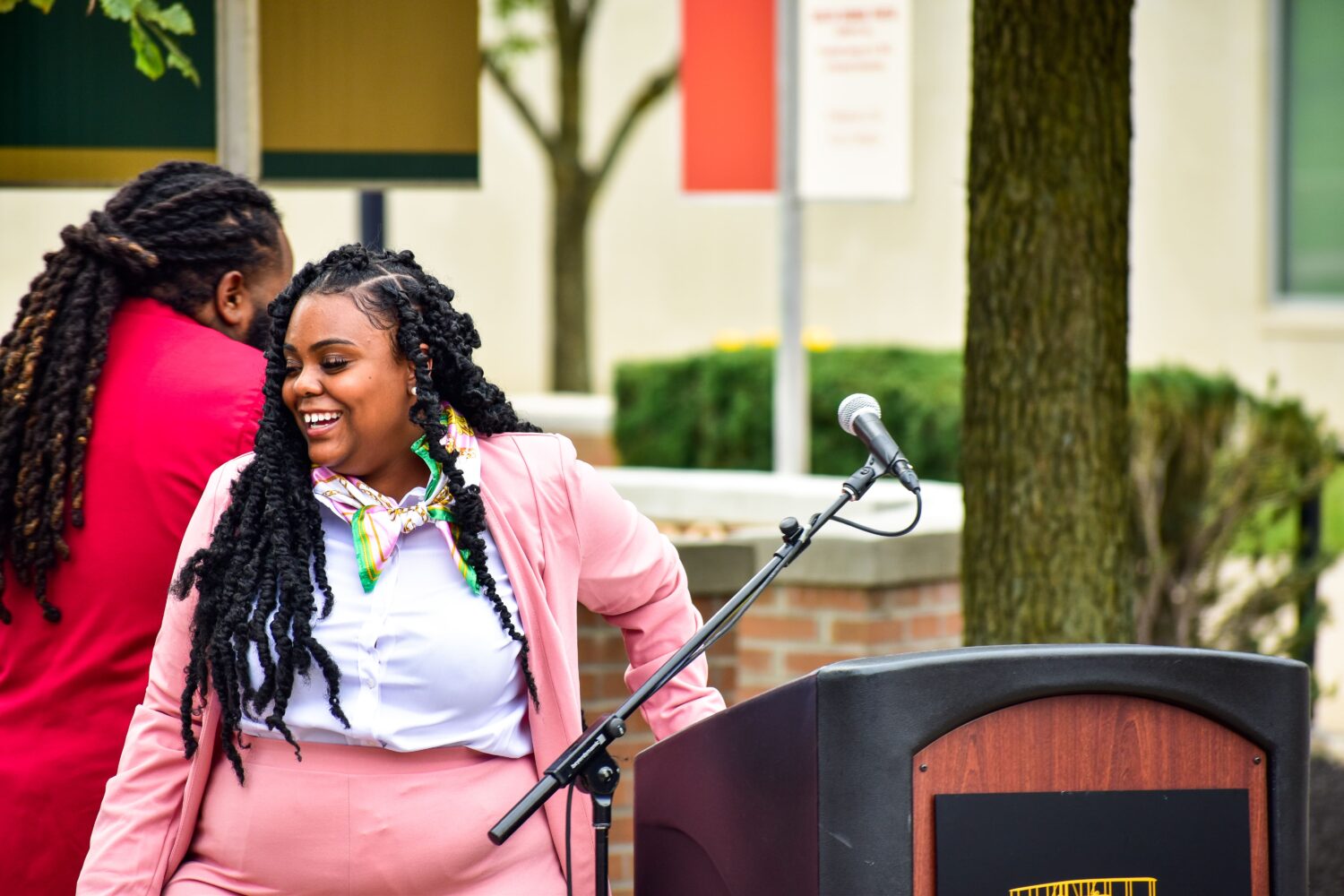
One of the ways she showed her advocacy was through her involvement in building the NPHC Memorial Plots.
While Wooden advocated for acknowledgment of Black history and struggles, others like Natalie Smith, president of Alpha Kappa Alpha Sorority, Inc. and Shaquille Armstrong, president of NPHC, saw these plots as an educational opportunity for the community,
“I feel like this can inspire other people to speak, to use their voice to feel heard. [It is] one thing to just say that you can hear or understand someone, but actually showing the actions [is different],” Smith said.
Educational opportunities to teach the community about the struggles of the African American community and Greek life inspired and motivated many involved in NPHC to contribute to the project, including Armstrong. He saw an opportunity in leadership and the plots.
He considers the plots as a way the minorities on campus can educate the campus community about racial issues, history and Greek Life.
“When we are teaching these things to other students that are not of African American descent, and then they’re interested in that… that’s another type of special,” Armstrong said.
Armstrong is also a member of Kappa Alpha Psi Fraternity, Inc.
Racial history in the U.S.
The United States, like many Western nations, has continually struggled with racial inequality and racial inequity. Institutions like colleges and universities are not immune to this struggle.
Representation, inclusion and safety of minorities, especially racial minorities, remains a prominent topic on higher education campuses across the nation. Consequently, students and young persons stay some of the most prominent advocates for change in the social-political landscape.
From the Civil Rights movement to the modern Black Lives Matter movement, young people, especially those belonging to minority populations, have made strides to advocate for recognition in their communities and improve their communities’ standing in a predominantly white society.
While not a large university, Wright State and its students have taken these struggles and ideals in stride. The university is a predominantly white institution (PWI), with only 9.3% of its student population identifying as African American/Black and 21.1% of the population identifying under one or more minority racial identities.
Since the university’s founding, these diverse groups of students have gathered to advocate for inclusivity, visibility and safety on campus. Many of these efforts, such as creating the Culture and Identity Centers, the racial equity task force, student organizations like the Black Student Union and NPHC, were successful.
While great efforts have been made to make WSU a safe and inclusive campus for minority students, racially motivated hate incidents, like the Nov. 29, hate crime involving racial slurs in residential halls, show there are still improvements to be made.
This is why Black student leaders like Armstrong, Smith and Wooden and Black-centered student organizations advocate for visibility and education.
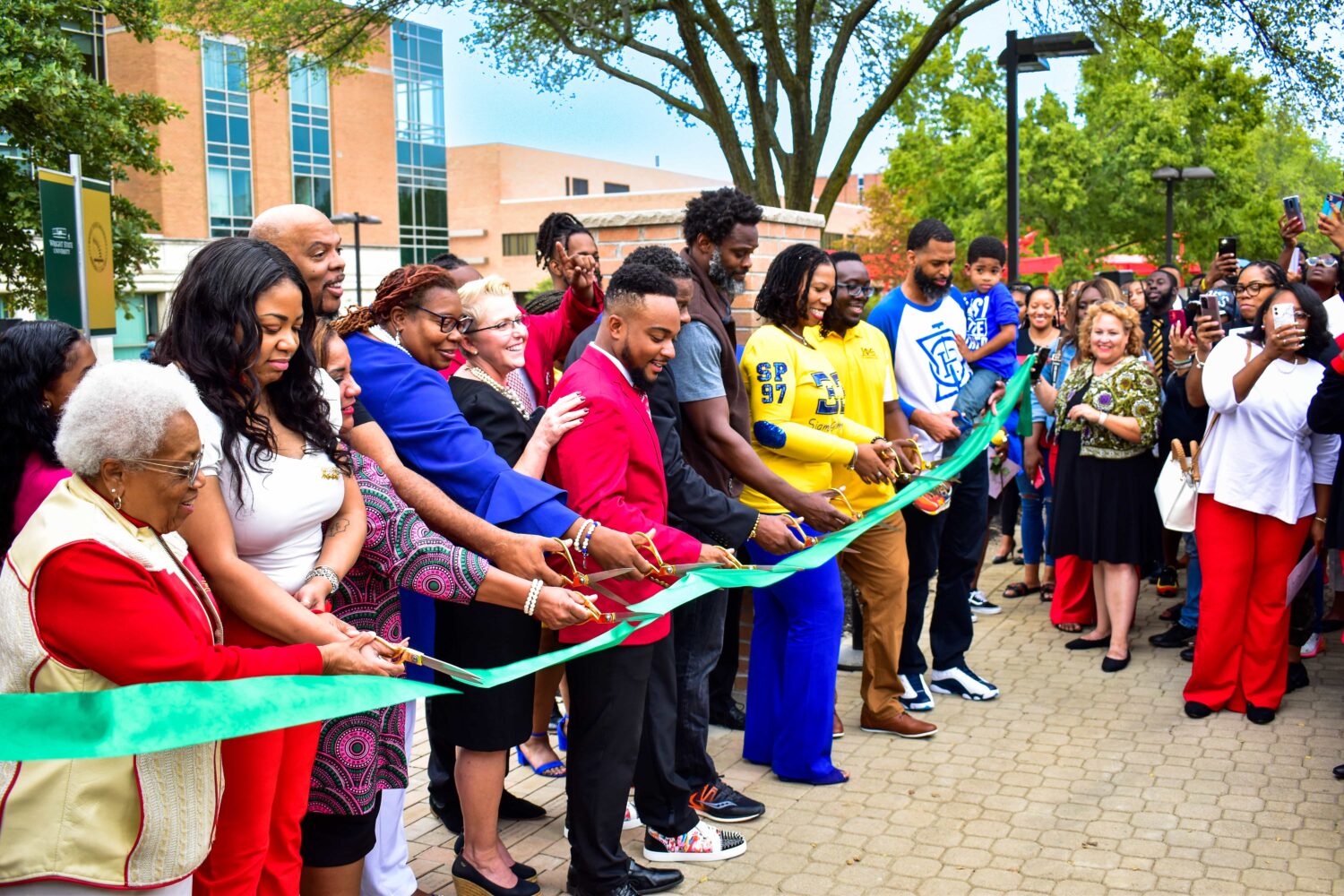
Legacy of the plots
Not only are these leaders hoping to educate and inspire campus community members, they wish to inspire the local Dayton community and other PWIs in Ohio. With the opening of the plots, Wright State became the first public PWI in Ohio to open a memorial plot dedicated to the Divine 9 and the students these organizations represent.
“It will inspire more people, not just our university but other universities to really dig deeper and represent everyone,” Smith said.
